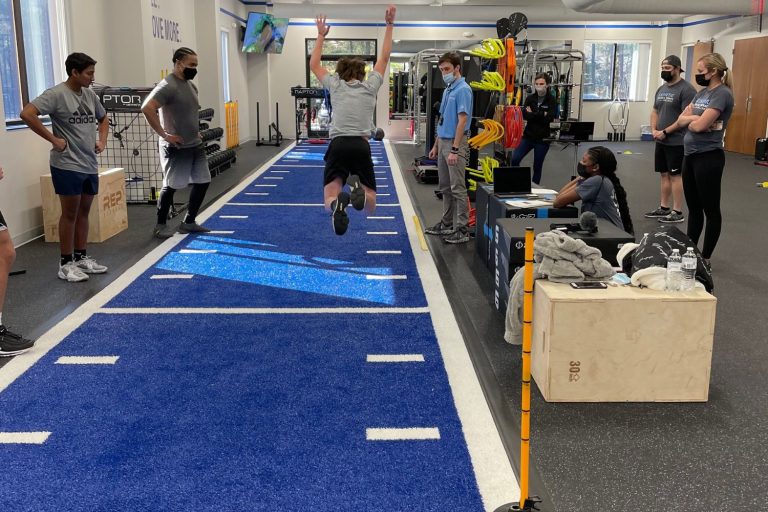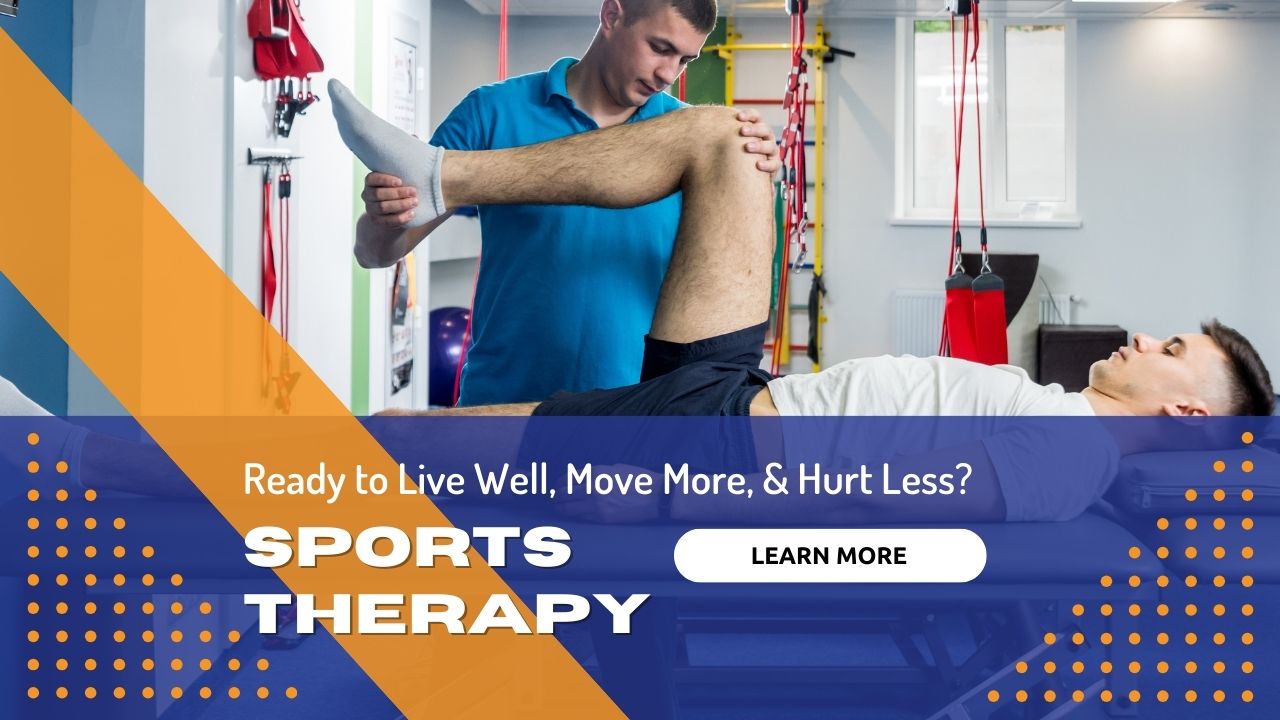

Why Knee Surgery is Not the End of Physical Fitness
Being the largest joint, the knee is one of the most important features in the human body. It is made of different bones, cartilage, ligaments, tendons and muscles. Aside from a complex anatomy, the knee also absorbs the weight of our body and the shock from our movements, making it very vulnerable to injury.
As we pointed out on Kinetic Physical Therapy & Wellness, damaging the anterior cruciate ligament (ACL) is one of the most common injuries. A Grade 1-2 sprain will recover through a regimented physical treatment but a Grade 3 sprain or a complete tear of the ACL will not heal without rebuilding the ligament through surgery. The same holds true for other ligaments, with the medial collateral ligament (MCL) the second most commonly injured. One athlete that comes to mind is NBA player Kevin Durant, who suffered a Grade 2 sprain to his MCL last year. Since it was a partial tear, no surgery was required, and physical rehabilitation helped him achieve a full recovery.
Another anatomical feature that commonly gets injured is the meniscus. Each knee has two menisci, the medial and the lateral. A meniscus is a cartilage that acts as padding that protects the ends of the bones and prevents them from rubbing together. Dr. Nina Jullum Kise explains that performing surgery on a patient with a meniscal tear depends on whether it is degenerative or traumatic in nature. Degenerative tears normally occur with age, wear and tear and conditions such as arthritis. In this case, Dr. Kise states that exercise is a preferable treatment for patients to minimize further complications. She references a study that found physical therapy showed more success in reducing pain and improving strength and mobility than patients who underwent surgery.
On the other hand, surgical treatment is recommended for traumatic knee injuries caused by playing sports or accidents. Many well-known athletes have sustained injuries to their menisci and required surgery to recover. In 2016, Roger Federer announced his withdrawal from major tournaments due to a torn meniscus. The irony is that his injury happened at home in the bath and not while playing tennis. Nonetheless, the tennis pro underwent arthroscopic surgery on his left knee and made a full recovery. It didn’t take long for the Swiss ace to reclaim his rank as #1 in the world, and Federer enjoyed a resurgent 2017 which also earned him the title of the highest paid tennis player that year. It’s a difficult decision for a professional athlete to take a long break from sports, but as you can see from Federer’s case, it is one that paid off in the long run.
However, injuries that require a total knee replacement (TKR) will most likely force you to choose a gentler form of exercise. It’s most commonly performed in people with knee arthritis where symptoms become too severe and painful that they affect a person’s mobility. Very Well Health lists down low-impact activities such as cycling, swimming and calisthenics that people who’ve had TKR can still do. On the other hand, sports such as basketball, football and jogging are not recommended.
It’s natural for athletes or active individuals to ask whether they’ll be able to return to an active lifestyle after a knee surgery. Depending on the type of injury and appropriate surgery, there are positive chances of making a full recovery. With time and care, you will be back on your feet and have the chance to rebuild yourself.
Blog post for kineticptgreenville.com by Millie Miles
Please Share
categories
Recent Posts
categories

Why Knee Surgery is Not the End of Physical Fitness
Being the largest joint, the knee is one of the most important features in the human body. It is made of different bones, cartilage, ligaments, tendons and muscles. Aside from a complex anatomy, the knee also absorbs the weight of our body and the shock from our movements, making it very vulnerable to injury.
As we pointed out on Kinetic Physical Therapy & Wellness, damaging the anterior cruciate ligament (ACL) is one of the most common injuries. A Grade 1-2 sprain will recover through a regimented physical treatment but a Grade 3 sprain or a complete tear of the ACL will not heal without rebuilding the ligament through surgery. The same holds true for other ligaments, with the medial collateral ligament (MCL) the second most commonly injured. One athlete that comes to mind is NBA player Kevin Durant, who suffered a Grade 2 sprain to his MCL last year. Since it was a partial tear, no surgery was required, and physical rehabilitation helped him achieve a full recovery.
Another anatomical feature that commonly gets injured is the meniscus. Each knee has two menisci, the medial and the lateral. A meniscus is a cartilage that acts as padding that protects the ends of the bones and prevents them from rubbing together. Dr. Nina Jullum Kise explains that performing surgery on a patient with a meniscal tear depends on whether it is degenerative or traumatic in nature. Degenerative tears normally occur with age, wear and tear and conditions such as arthritis. In this case, Dr. Kise states that exercise is a preferable treatment for patients to minimize further complications. She references a study that found physical therapy showed more success in reducing pain and improving strength and mobility than patients who underwent surgery.
On the other hand, surgical treatment is recommended for traumatic knee injuries caused by playing sports or accidents. Many well-known athletes have sustained injuries to their menisci and required surgery to recover. In 2016, Roger Federer announced his withdrawal from major tournaments due to a torn meniscus. The irony is that his injury happened at home in the bath and not while playing tennis. Nonetheless, the tennis pro underwent arthroscopic surgery on his left knee and made a full recovery. It didn’t take long for the Swiss ace to reclaim his rank as #1 in the world, and Federer enjoyed a resurgent 2017 which also earned him the title of the highest paid tennis player that year. It’s a difficult decision for a professional athlete to take a long break from sports, but as you can see from Federer’s case, it is one that paid off in the long run.
However, injuries that require a total knee replacement (TKR) will most likely force you to choose a gentler form of exercise. It’s most commonly performed in people with knee arthritis where symptoms become too severe and painful that they affect a person’s mobility. Very Well Health lists down low-impact activities such as cycling, swimming and calisthenics that people who’ve had TKR can still do. On the other hand, sports such as basketball, football and jogging are not recommended.
It’s natural for athletes or active individuals to ask whether they’ll be able to return to an active lifestyle after a knee surgery. Depending on the type of injury and appropriate surgery, there are positive chances of making a full recovery. With time and care, you will be back on your feet and have the chance to rebuild yourself.
Blog post for kineticptgreenville.com by Millie Miles
Please Share









